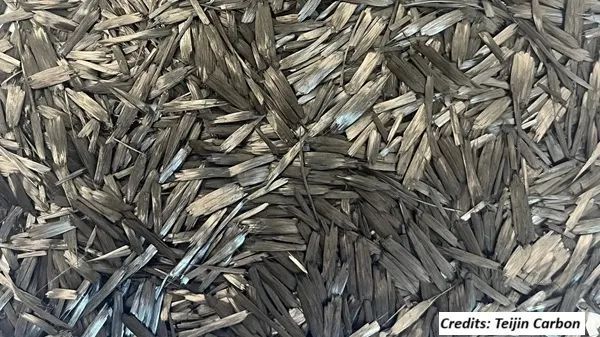Teijin Carbon Fiber Launches Sustainable Short Carbon Fiber at JEC World 2025
Through this breakthrough, Teijin Carbon Fibers has provided manufacturers and composite producers with a forward-looking solution in both technological and ecological aspects, thereby setting a new standard for sustainability in the field of the circular economy.

Combining Sustainability with Performance
"Through this innovation, we are taking another step towards a sustainable future," said Dr. Julian Lowe, Manager of Teijin Carbon Fibers Global Industrial Group. "Our goal is to pave the way for a true circular economy in the carbon fiber industry and provide our customers with an eco-friendly alternative that optimizes production processes while reducing waste and emissions."
Tenax Next™ R2S 513 6mm short carbon fiber is made from recycled loose fiber materials. This advancement is not only a milestone for Toray Carbon Fiber but also a significant step towards more environmentally friendly and resource-saving production. By utilizing by-product fiber materials, the company saves valuable resources and provides an attractive option for companies looking to advance their sustainability goals through the use of low CO materials.
Transparency and Traceability
The Tenax Next™ R2S 513 6mm marks an important milestone in Teijin's launch of its first Digital Product Passport (DPP). The DPP is a data sheet accessible via a QR code, ensuring full transparency and traceability throughout the product lifecycle. It provides detailed information about the product’s origin, materials, and sustainability, from production to end-of-life.
The concept of a Digital Product Passport is rooted in the European Green Deal and the EU Circular Economy Action Plan. Both initiatives define a product passport as a key tool for promoting a climate-neutral and resource-efficient economy.
Entire value chain advantages
Tenax Next™ R2S 513 6mm short carbon fiber targets multiple groups, providing customized advantages for each group.
-
Manufacturers of finished products made from fiber-reinforced plastics can now offer their customers high performance and sustainability. Thanks to full traceability, the lifecycle of the materials can be communicated transparently using DPP—this is a strong selling point in an increasingly environmentally-conscious consumer market.
-
Manufacturers of components and molds using fiber-reinforced plastics can benefit from the stability and traceability of recycled carbon fiber materials, enabling long-term planning, safety, and reliable quality assurance. The reduced CO₂ footprint of this product also provides a competitive advantage in markets that require environmentally friendly product declarations, especially in an increasingly stringent regulatory environment.
-
The composite manufacturer that produces fiber-reinforced thermoplastic compound pellets using short-cut carbon fibers and thermoplastic resins can rely on a stable supply of raw materials and consistent pricing. This reduces procurement risks and strengthens the company's environmental image.
Wide application range
Round carbon fiber is suitable for a wide range of applications across various industries, including:
-
Sports equipment: shoes (insoles, outsoles, etc.), golf clubs, bicycle components, fishing reels, tennis rackets, and hockey and lacrosse gear.
-
Electronics: laptops, cameras, virtual reality (VR) devices, printers, cash handling machines, vacuum cleaners.
-
Automobiles: vehicles, automotive parts (Level 1/Level 2).
【Copyright and Disclaimer】The above information is collected and organized by PlastMatch. The copyright belongs to the original author. This article is reprinted for the purpose of providing more information, and it does not imply that PlastMatch endorses the views expressed in the article or guarantees its accuracy. If there are any errors in the source attribution or if your legitimate rights have been infringed, please contact us, and we will promptly correct or remove the content. If other media, websites, or individuals use the aforementioned content, they must clearly indicate the original source and origin of the work and assume legal responsibility on their own.
Most Popular
-

Brazil Imposes Five-Year Anti-Dumping Duty of Up to $1,267.74 Per Ton on Titanium Dioxide From China
-

Mexico officially imposes tariffs on 1,400 chinese products, with rates up to 50%
-

MOFCOM Spokesperson Answers Questions from Reporters on China-U.S. Kuala Lumpur Trade Consultations Joint Arrangement
-

"Golden October" Weak, Polyethylene Prices Hit New Low of the Year in October
-

Kingfa Sci & Tech Q3 Net Profit Attributable to Shareholders Rises 58.0% YoY to 479 Million Yuan






